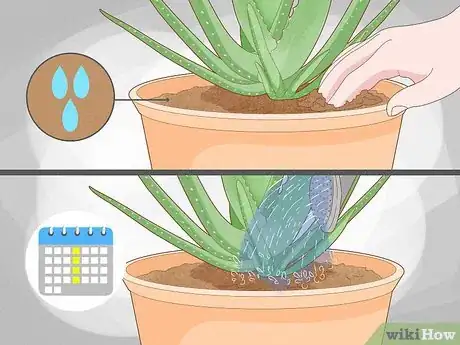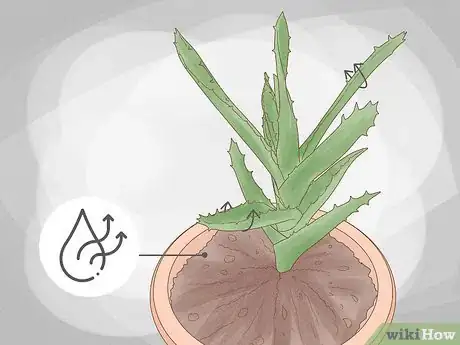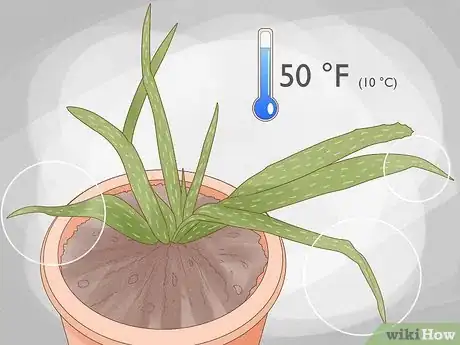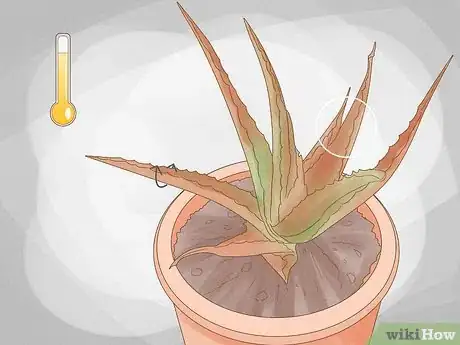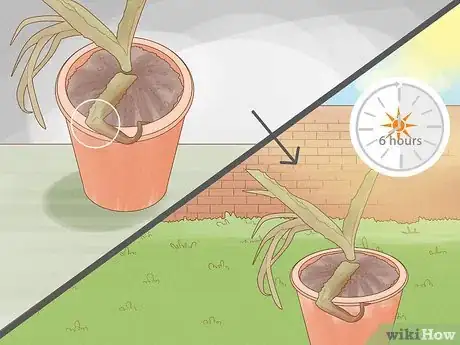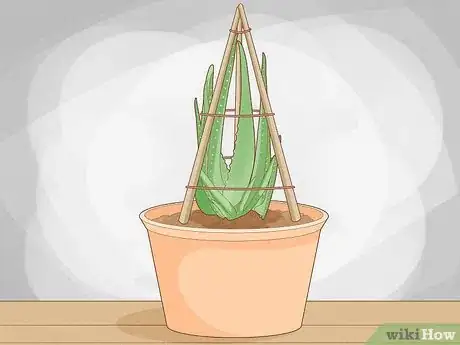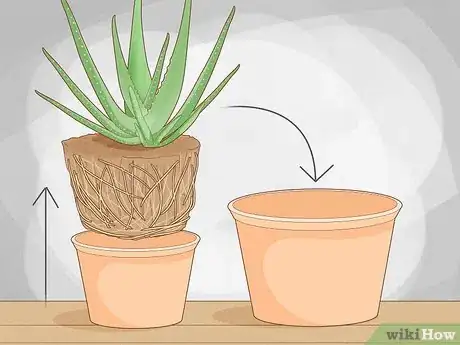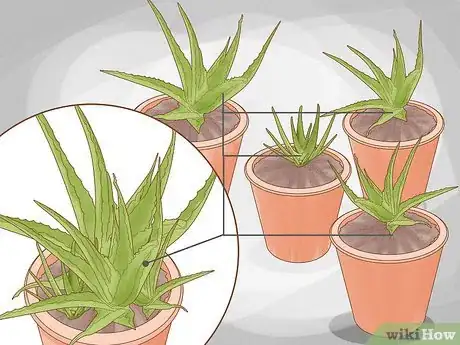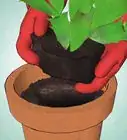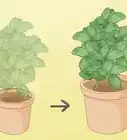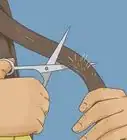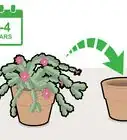This article was co-authored by Artemisia Nursery and by wikiHow staff writer, Jessica Gibson. Artemisia Nursery is a retail plant nursery in Northeast Los Angeles specializing in California native plants. Artemisia Nursery is a worker-owned small business with plans to become a worker-owned cooperative. In addition to California native plants, Artemisia Nursery offers a selection of succulents, heirloom veggie and herb starts, house plants, pottery, and gardening tools and supplies. Drawing on the knowledge of the founders, Artemisia Nursery also offers consultations, designs, and installations.
There are 11 references cited in this article, which can be found at the bottom of the page.
This article has been viewed 29,846 times.
You've probably heard again and again how resilient aloe plants are. So what does it mean when yours starts to flop? Don't despair! Droopy aloe plants are actually quite common and there are a lot of reasons they might do this. Read through our list of causes so you can troubleshoot a solution for your aloe plant. With a little care, it may start perking up.
Steps
The plant is getting too much water.
-
Too much water can rot the roots so the aloe's leaves droop. Scrape the soil with your fingernail. If it feels soggy or there's standing water, then your plant is getting too much moisture. Cut back on the watering to give your aloe a chance to dry out.[1] X Research source
- Most aloe plants are content to go several days or even a week in between watering.
Your aloe isn't getting enough water.
-
Feel the surface of the soil and water if it feels dry. Although aloe vera plants like dry conditions, if they haven't gotten enough water, their leaves may curl inward and droop. Water just enough to saturate the soil or stop as soon as you see water draining out of the pot.[2] X Trustworthy Source Royal Horticultural Society Leading gardening charity in the U.K. providing resources for identifying, growing and caring for flowers and other plants Go to source
- Give your aloe vera time to dry out between watering sessions.
The temperature is too cold.
-
Your plant may droop if it's cooler than 50 °F (10 °C). Aloe plants like hot, dry weather so when it gets cold out the plant may wilt. If you can, bring your aloe indoors or move it to a warmer room in your home. Usually, your plant will perk up within a few days of moving it to a warm spot.[3] X Research source
- If you can't bring your aloe in and the temperatures really drop in your area, wrap fleece or bubble wrap around the base of the plant to protect its roots from freezing.[4] X Trustworthy Source Royal Horticultural Society Leading gardening charity in the U.K. providing resources for identifying, growing and caring for flowers and other plants Go to source
The aloe plant is too hot.
-
If the weather has been hot and dry, your aloe may begin to shrivel or curl. Although aloe plants enjoy hot temperatures, if the weather's been over 95 °F (35 °C), the heat might be taking a toll on your plant! If it's possible, move your plant to a cooler or shadier spot. Even if you can't move it, give your aloe some water to hydrate the leaves so they don't curl so badly.[5] X Research source
- If your area is dryer or hotter than usual, you may need to adjust your watering schedule so you're checking the plant more frequently.
Your plant isn't getting enough sunlight.
-
Put your aloe where it can get 6 hours of sunlight a day for the best growing conditions. You might notice your aloe vera plant droops in low-lighting conditions. If you can, move your plant to a brighter spot in your home or yard.[6] X Research source
- If you keep your plant in a bright windowsill, turn it every week so all sides of the plant get enough light. It might start to droop to 1 side if that's the side that always gets sunlight.
Your aloe plant needs to be staked.
-
Give your plant extra support as it grows to help straighten out the leaves. If all of the leaves are droopy, insert 3 or 4 thin bamboo rods into the soil around the base of your plant. Ask a friend to help gather the bamboo leaves together so they're pointing up. Then, tie a string around all of the rods so they're connected. Wrap a few more circles of string around the rods to create a kind of support cage around the aloe.[7] X Research source
- When your friend lets go of the leaves, they'll now be supported by the bamboo and string.
- You can leave the bamboo rods in until the plant's root system is established and the leaves begin to grow up on their own.
- If you don't want to make your own bamboo support, you could use a small garden support ring instead. Center it around your aloe and push the feet down into the soil.
The container is too shallow.
-
Transplant your aloe vera to a deep, well-draining container. It might just be that your plant has grown so much that it's top-heavy and the roots can't grow deep enough to stabilize it. Find a pot that's at least as big as the root ball of your aloe vera. Don't forget to use loose, well-draining soil.[8] X Research source
- Terracotta pots are great for aloe vera plants. The porous material helps the soil dry out in between watering sessions so the roots don't get waterlogged.
Train the plant if you want the leaves to grow straight up.
-
Most aloe vera plants grow somewhat horizontally. If you're looking for perfectly straight leaves, start with a small plant and wrap a very thin wire around the outside of the leaves. Use plastic-coated training wire that you can buy at most garden centers. Pull the ends of the wire together to gather the leaves so they're compact and pointing up. Then, leave the wire in place so the plant begins to grow upward.[9] X Research source
- Leave the wire in place for at least a few days—you're training the plant to grow in a specific direction so if you remove the wire too soon, the aloe may keep growing out to the sides.
Divide the plant if it's growing out of its pot.
-
Some aloe vera plants form clumps that droop over the container. This isn't a problem, it just means that you may want to cut off the baby offshoots—called pups—that are growing at the base of your plant. Use a small garden trowel to cut away the pup and its root system from the large aloe. Let the pup dry in a warm room for 2 days so the root end can harden. Then, plant the pup in a container that's slightly larger than the pup.[10] X Expert Source

Plant Nursery & Garden Shop Expert Interview. 7 August 2020.- You may be able to simply loosen and pull the pup out of the soil instead of digging it out.
- Some aloe vera varieties don't grow as tall or straight as others. You might have a variety that grows in clumps that are low to the ground instead.[11] X Research source
Pests are infesting your aloe plant.
-
Check the leaves for tiny bugs like scale insects or mealybugs. These insects damage your plant by sucking moisture from the leaves so the leaves will curl or go limp. Sometimes, just spraying the plant with water blasts off the pests. If it doesn't, spray non-toxic insecticide like neem oil spray on the leaves to get rid of the pests as soon as possible.[12] X Research source
The plant has a fungal infection.
-
Check the roots near the outer leaves to see if they break off easily. If your plant has root rot, the roots will feel mushy and look black. If you can easily lift the aloe out of its container, you'll see that most of the roots are soggy and have been left behind in the container. They'll probably have a rotten smell, too. Unfortunately, it's difficult to completely treat the plant so you'll need to replace it and cut back on watering in the future.[13] X Research source
- If you'd like to try to save your plant, remove it from the soil and cut off all of the diseased roots. Then, transfer it to a new container with fresh soil that drains well.
You Might Also Like
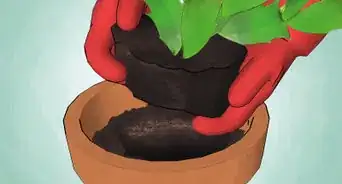
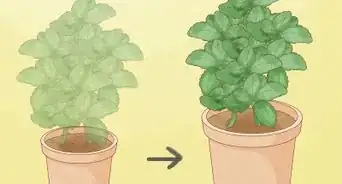

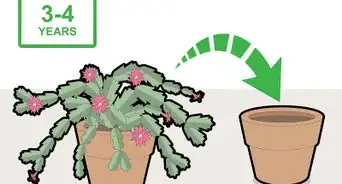

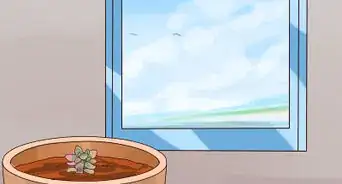
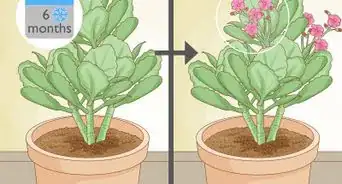
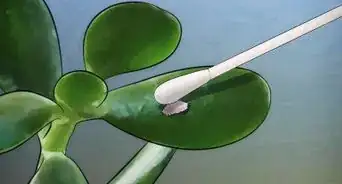

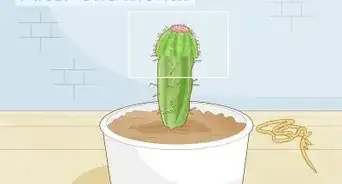
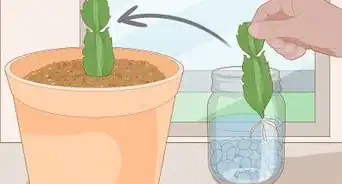

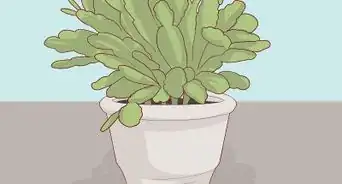
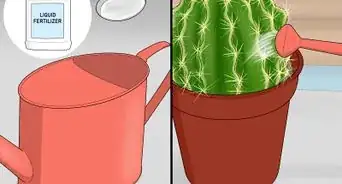
References
- ↑ https://libanswers.nybg.org/faq/283653
- ↑ https://www.rhs.org.uk/plants/types/cacti-succulents/houseplants/growing-guide
- ↑ https://youtu.be/ABYjkbpThbs?t=168
- ↑ https://www.rhs.org.uk/plants/types/cacti-succulents/houseplants/growing-guide
- ↑ https://www.cabi.org/isc/datasheet/4192#toairTemperature
- ↑ https://plants.ces.ncsu.edu/plants/aloe-vera/
- ↑ https://youtu.be/ABYjkbpThbs?t=288
- ↑ https://www.gardenersworld.com/how-to/grow-plants/how-to-grow-aloe-vera/
- ↑ https://youtu.be/Mb8UC5YSJjc?t=106
- ↑ Artemisia Nursery. Plant Nursery & Garden Shop. Expert Interview. 7 August 2020.
- ↑ https://libanswers.nybg.org/faq/283653
- ↑ https://www.plantsrescue.com/aloe-vera/
- ↑ https://extension.umd.edu/resource/root-rots-indoor-plants
About This Article

